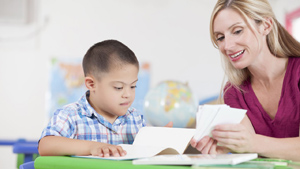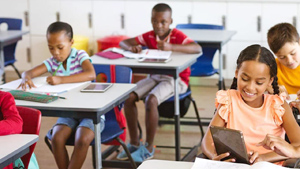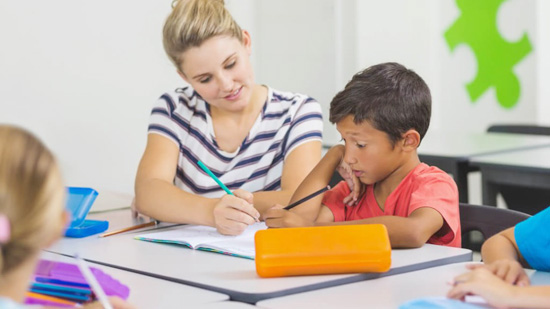Navigating the world of special education can be a complex journey, filled with unfamiliar terms and procedures that can seem daunting at first glance. As a parent, caregiver, or educator, understanding the significance of an initial evaluation for special education is a crucial step in advocating for children who may need additional support to succeed in their educational journey. In this comprehensive guide, I will walk you through the essentials of what an initial evaluation for special education entails, its importance, and how it can ultimately shape a child’s learning path.

Photo by verywellfamily
Introduction to Special Education
Special education is a tailored approach to teaching that caters to the unique needs of children who experience difficulties in learning in the same manner as their peers. This could be due to a variety of reasons, including physical disabilities, developmental delays, emotional disturbances, or specific learning disabilities. The goal of special education is to provide these children with the necessary support and resources to help them achieve their full potential.
The journey into special education often begins with an observation: a child struggling to keep up with their peers, a teacher noticing a student’s consistent difficulties in a particular area, or a parent concerned about their child’s development. This is where the initial evaluation becomes a pivotal first step. It serves as the gateway to identifying specific needs and mapping out a plan that addresses these needs through specialized educational strategies.
What Is an Initial Evaluation for Special Education?
An initial evaluation for special education is a comprehensive assessment designed to determine whether a child is eligible for special education services and, if so, what specific services and supports they require. This evaluation is not a simple, one-size-fits-all test. Instead, it is a detailed process that looks at the child’s abilities in various areas, including academic skills, social and emotional development, physical abilities, and communication skills.
The evaluation process is guided by professionals from different disciplines, ensuring a well-rounded understanding of the child’s needs. It’s a collaborative effort that involves teachers, special education professionals, psychologists, and often, medical practitioners. The aim is to gather a holistic view of the child’s abilities and challenges, which then forms the foundation for any educational support plans.
Importance of an Initial Evaluation
The importance of an initial evaluation cannot be understated. It is the cornerstone upon which the entire structure of a child’s special education plan is built. Without it, there would be no starting point for understanding the unique needs of the child, much less addressing them effectively.
This evaluation serves several critical functions. Firstly, it establishes whether a child is eligible for special education services. Not every child who faces challenges in school will qualify for these services, so the evaluation ensures that resources are allocated appropriately.
Secondly, it identifies the child’s specific areas of need, which is essential for developing an effective Individualized Education Plan (IEP). Finally, it provides a baseline against which the child’s progress can be measured, allowing for adjustments to their education plan as needed.
Process of an Initial Evaluation
The process of an initial evaluation is thorough and multifaceted. It begins with a referral, usually made by a teacher, parent, or healthcare provider, which is then followed by a formal request for evaluation. Consent from the parents or guardians is a prerequisite before any evaluation can proceed.
Once consent is obtained, the evaluation process involves a series of assessments and observations. These assessments are not limited to academic performance but extend to cognitive, behavioral, and health evaluations, among others. The professionals conducting the evaluation will use a variety of tools and methods to gather information about the child’s abilities and needs.
Following the assessments, a meeting is held with the child’s parents or guardians, along with the evaluation team, to discuss the findings. This meeting is a crucial step in the process, as it provides an opportunity for parents to ask questions, provide additional insights, and understand the next steps in their child’s educational journey.
Common Assessments Used in an Initial Evaluation
The assessments used in an initial evaluation cover a broad spectrum, each designed to uncover different aspects of a child’s abilities and challenges. These can include intelligence tests, achievement tests, observational assessments, and screenings for specific learning disabilities.
Other common assessments might focus on speech and language, fine and gross motor skills, and social-emotional development. The specific assessments chosen will depend on the child’s observed needs and the professional judgment of the evaluators. The key is to ensure a comprehensive understanding of the child, which will inform the development of an effective support plan.
Parents/Guardians in the Initial Evaluation
Parents and guardians play a pivotal role in the initial evaluation process. Their insights into the child’s history, behaviors, and challenges are invaluable to the evaluators. Moreover, their support and advocacy for their child can significantly impact the outcome of the evaluation and subsequent support plan.
It’s important for parents to be active participants in the process, asking questions, providing relevant information, and ensuring they understand the findings and recommendations. Their involvement doesn’t end with the evaluation but continues as they work with educators to implement and adjust their child’s IEP.
Results of an Initial Evaluation
The results of an initial evaluation can be a lot to take in for parents and guardians. These results will detail the child’s strengths and areas of need, providing a clear picture of what supports are necessary. It’s crucial for parents to understand these results fully, as they form the basis for their child’s Individualized Education Plan (IEP).
Questions are encouraged at this stage, and parents should feel empowered to seek clarifications and further explanations. Understanding the evaluation’s findings is key to being an effective advocate for the child’s educational journey.
Developing an Individualized Education Plan (IEP) Based on the Evaluation
The culmination of the initial evaluation process is the development of an Individualized Education Plan (IEP) for the child. This plan is tailored to the child’s unique needs, as identified in the evaluation, and outlines the specific supports and services they will receive.
The IEP is a collaborative effort, involving parents, teachers, and special education professionals. It sets goals for the child and specifies the strategies and resources that will be employed to achieve these goals. The plan is a living document, subject to review and adjustment as the child’s needs evolve.
Resources and Support for Families During the Initial Evaluation Process
The initial evaluation process can be overwhelming for families, but they don’t have to navigate it alone. Numerous resources and supports are available to help families understand the process, advocate for their child, and connect with other families in similar situations.
Parent training and information centers, special education advocacy groups, and online forums can provide valuable information and support. Schools and special education professionals are also crucial resources, offering guidance and answering questions throughout the evaluation and IEP development process.
Conclusion
An initial evaluation for special education is more than just a procedural step; it is a crucial journey that sets the stage for a child’s educational path. It requires the collaboration and dedication of families and professionals alike to ensure that every child receives the support they need to thrive.
By understanding the significance and process of this evaluation, parents and guardians can become empowered advocates for their children, fostering an environment where every child has the opportunity to succeed.



